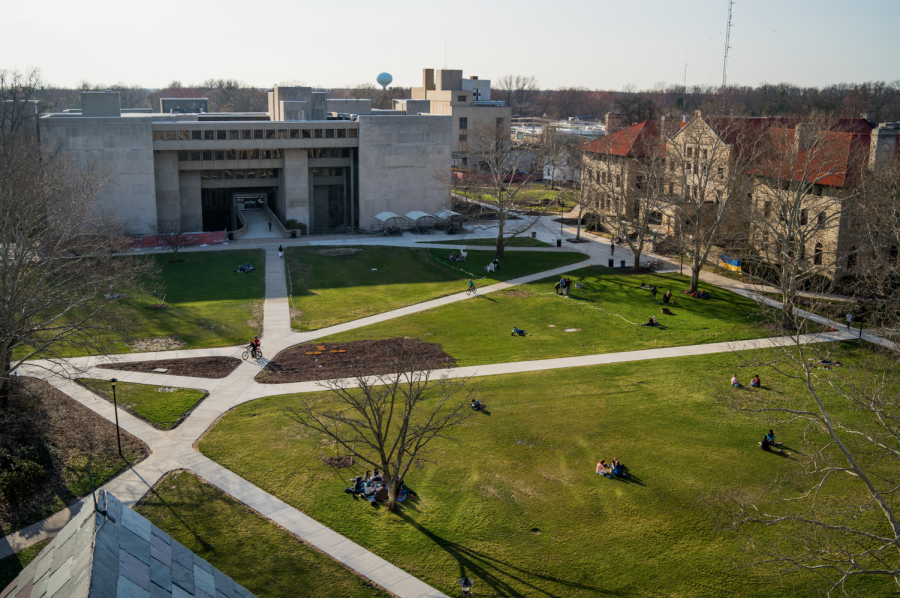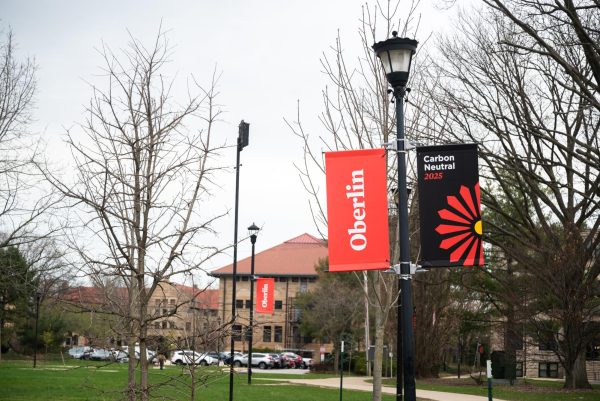One Oberlin Implements Operational Efficiency Strategies
The College has made changes to operational efficiency as part of the implementation of One Oberlin.
Nearing the three-year anniversary of the College’s Academic Administrative Program Review, the administration submitted a situation report on the project to the Board of Trustees during their March 4 meeting. The AAPR was a year-long process that analyzed nearly every aspect of Oberlin’s budget and culminated in the One Oberlin report, which offers recommendations to solve Oberlin’s outstanding structural deficit.
Three primary sections recommend the bulk of institutional changes: Academic Reorganization, Operational Efficiency, and New Curricular and Career Programming. Through a series of in-depth articles on each of these sections, the Review will cover the impacts and current standing of One Oberlin, starting with Operational Efficiency.
The first observation under Operational Efficiency concerned personnel costs and administrative efficiency. As reported last week, the AAPR report cited total compensation across employee groups as approximately 60 percent of the College’s operating budget. The report indicated that there were two primary reasons for the size of this spending: hourly workers were being paid significantly higher wages than their counterparts at peer institutions, and the College was managing multiple health care plans for different employee groups at that point. In June 2020, the College announced that it was outsourcing dining and custodial services and officially severed its contract with the United Auto Workers, the union that represented dining and custodial workers. In turn, dining was outsourced to AVI Foodsystems, which signed a four-year contract with UAW to unionize their employees in February 2021. Custodial staff were outsourced to Scioto Services. This transition has saved the College $2.4 million in fiscal year 2021–22.
Meanwhile, all non-unionized College employees were transitioned to a Consumer Driven Healthcare Plan and Health Savings Account on Jan. 1 this year. While the shift is expected to save the College $1.2 million every year, Vice President for Finance and Administration Rebecca Vazquez-Skillings explained that the College won’t start experiencing those savings until fiscal year 2023.
“The new plan was implemented in January 2022, so there are no associated savings at this time,” Vazquez- Skillings wrote to the Review. “A portion of the savings in the first year have been reallocated to provide an increased lump-sum contribution to employees’ health savings accounts. The College will see the first year of savings from this change in FY 2023.”
Both the decisions to outsource employees and change health care plans were met with contention from the Oberlin community. In March 2020, more than 500 members of the community gathered in protest of the UAW decision, calling it union busting. A majority of faculty, meanwhile, have voted in favor of two motions to improve compensation: one last December that was rejected by the trustees earlier this month, and another motion last Wednesday. Additionally, approximately 200 students marched in protest of the current compensation model on Thursday, March 10.
Despite these criticisms from the College community, One Oberlin highlights the importance of preserving the institution’s relationship with the community — from the City of Oberlin, Oberlin City Schools, Mercy Allen Hospital, to other local business partners — with a focus on upholding its reputation as an employer of choice in the region. To that effect, community engagement programs range from a Climate Action and Mitigation plan to collaborative work with the Oberlin Business Partnership and the Downtown Stakeholders Working Group.
One Oberlin also recommends management development strategies for all levels of College leadership. The primary goal with these proposals is to decrease inefficient practices and articulate individual responsibilities to deter operational redundancies. Approaches to this involved investment in human resources and data management technology. Chief Human Resources Officer Joe Vitale wrote to the Review about a number of workshops that were created and facilitated across divisions with the goal to improve the institution’s understanding of roles and responsibilities at Oberlin. The Office of Equity, Diversity and Inclusion and HR have worked together to refine search committee training, which the EDI has supplemented with workshops to address workplace harassment.
In addition to professional development, systems have also been implemented to evaluate employee performance in different departments. Starting in 2019, supervisors and employees were able to input assessments through an online portal year-round. According to Vitale, the benefit of this system is in affirming the idea of continual performance evaluations and the customizable nature of the system to suit specific department needs.
Changes to the Office of Student Life reflect One Oberlin’s commitment to streamlining employee responsibilities and increasing efficiency. Upon her arrival at Oberlin, Vice President and Dean of Students Karen Goff began restructuring the office. Most recently, Goff has introduced several new roles to focus on seven key strategic areas: Professional, Operational, and Administrative Excellence; Residential and Dining Experience; Student Belonging and Support; Student Safety and Wellbeing; Student Leadership and Involvement; Career Discovery and Development; and Student Success.
“The One Oberlin report, along with the external assessment, were instrumental in providing a roadmap for the path forward,” Goff wrote to the Review. “With many of these areas falling under a single leader, this should help to reduce the ‘silo’ effect, create and facilitate natural synergies across departments and units, which helps to substantiate the ‘role realignment’ where the administrative enterprise supports academic excellence, student success, and institutional value. Ultimately, the shift and improvement of operational efficiency should provide a more equitable and holistic student experience.”
An additional One Oberlin recommendation that falls under the purview of the Division of Student Life is to develop an equitable and financially sustainable residential experience. As of 2019, the operations of Oberlin’s student-run co-ops were resulting in an annual $1.9 million negative impact on the institution’s budget. Following a round of contract renegotiations that concluded in December 2020, the negative financial impact of the Oberlin Student Cooperative Association has been completely cleared. While the accomplishment of this task relieved some financial burdens on the College’s side, it placed additional financial burdens on OSCA, forcing it to close a dining co-op space and hike up the price of participation in the nonprofit.
“Originally intended to make Oberlin more accessible to low-income students, OSCA membership used to cost approximately half as much as [Campus Dining Services] membership,” College first-year Abigail Nordan wrote in an email to the Review. “Now, Oberlin’s administration reduces grant money awarded to prospective OSCAns dollar for dollar according to the price difference, making the financial incentive to join co-ops obsolete. In addition to this, the administration also lowers need-based financial aid to prospective OSCAns, as if there was still significant money to be saved by opting out of CDS.”
The final element of improving operational efficiency concerns the usage of space and facilities. According to One Oberlin, space costs amounted to approximately $42 million per year, which was 73 percent of Oberlin’s annual indirect expenditures. The report explains that the College maintains approximately 1,000 square feet per student as compared to an average of 818 square feet per student at peer institutions. The significant contributor to the total space costs, however, are depreciation costs, which accounted for $20.4 million per year. In an effort to reduce these costs, the College has begun investing in preventative maintenance, improved system efficiency and continued work in renovating and replacing infrastructure. The Sustainable Infrastructure Project on its own will improve system efficiency and annually save an estimated $1 million in addition to steam system repair expenses of $300,000–$500,000. An additional element of the SIP is to integrate air conditioning into some residential buildings.
Decreasing Oberlin’s physical plant — the total space over which the College’s infrastructure is spread — is the long-term strategy to improve operational efficiency. The Office of Finance and Administration is responsible for managing the institution’s spaces, and since 2019, has managed to eliminate 21,000 square feet of space through Village Housing deconstruction, and instead convert over 16,000 square feet of administrative space to Village Housing. Simultaneously, 14,000 square feet of administrative space has been consolidated into Mudd Center A-level, where the new Center for Engaged Liberal Arts is being constructed.







